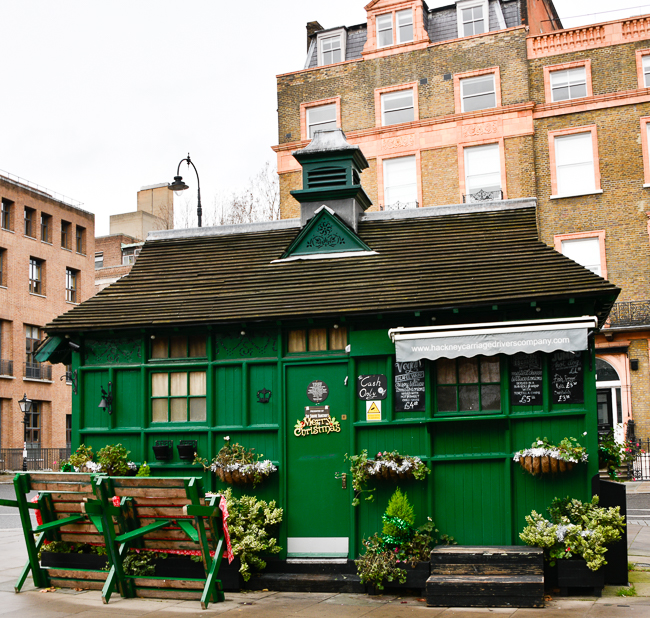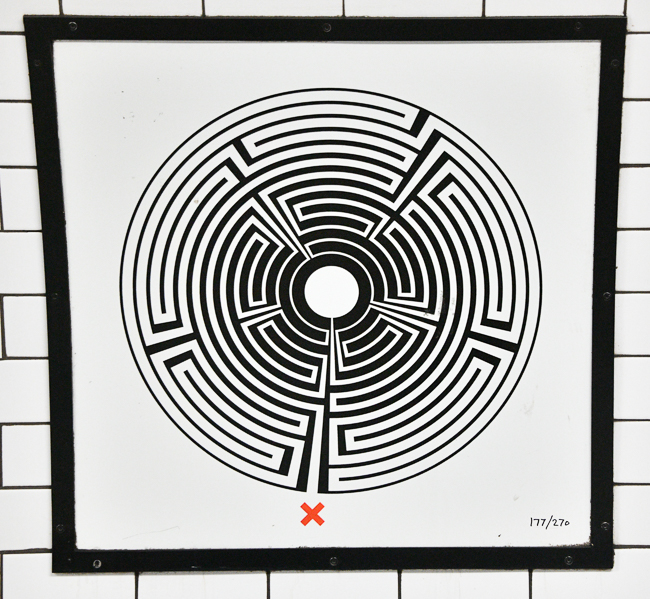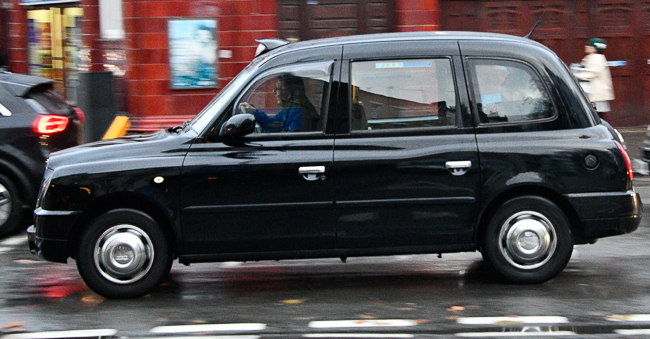The huts came about in the late 19th Century when George Armstrong, later to become editor of The Globe newspaper, was unable to hail a taxi during a blizzard because the drivers of the then horse-drawn cabs were staying warm in a nearby pub. In 1875 the Cabmen’s Shelter Fund was born.
December 2022
Taxis
With the advent of Uber and Lyft filling the world with cheap rides from underpaid drivers, the London Cabbie is still a wonder and should be used as often as possible while in London.
One of the reasons is Knowledge. The Knowledge was introduced as a requirement for taxi drivers in 1865. There are thousands of streets and landmarks within a six-mile radius of Charing Cross. Anyone who wants to drive a London cab must memorize them all: the Knowledge of London.
This is actually rather important as the amount of construction that is occurring in London means someone with The Knowledge can get you to your destination on time and without getting lost, as happened to me the only time I agreed to take an Uber.
There is a push in London to switch to electric taxis. They have a little bit different shape and cost £55,599. I spoke with an older cab driver that didn’t mind the price but said there simply aren’t enough charging stations to make the system work. However, I have a feeling; despite pushback, the electric London cab is the future, as it was, for a short time, in the past.
London’s first horseless cabs were powered by electricity and were called Berseys, after their designer Walter C. Bersey. Twenty-five of them were introduced in August 1897. However, they proved costly and unreliable, and after one fatality, they were off the streets of London by 1900.
 At Christmas, I stayed at a hotel off of Russell Square and spotted this lovely little shed. It is one of 13 cabmen’s shelters that still exist, out of an original 60, and only licensed drivers who have passed The Knowledge test are allowed inside.
At Christmas, I stayed at a hotel off of Russell Square and spotted this lovely little shed. It is one of 13 cabmen’s shelters that still exist, out of an original 60, and only licensed drivers who have passed The Knowledge test are allowed inside.
Each hut was built no larger than a horse and cart, required by the Metropolitan Police rules because they stood on public highways. They provided shelter and food for drivers and had strict rules against swearing, gaming, gambling, and drinking alcohol.
Today the huts are owned by the Worshipful Company of Hackney Carriage Drivers, and the Cabmen’s Shelter Fund is responsible for upkeep and maintenance, issuing annual licenses to those who run them.
The shelters’ have protected status, which means their restoration is expensive. Replacement materials must match the originals, including the color of the paint, Dulux Buckingham Paradise 1 Green.
Buses
Not easily spotted, the above bus is an AEC Routemaster designed by Douglas Scott. The first prototype was completed in September 1954, and the last one was delivered in 1968. Interestingly, no one really knows why London buses are red.
The Tube
 There is a labyrinth in every one of London’s 270 tube stations. Artist Mark Wallinger installed them to celebrate the Undergrounds’ 150th anniversary.
There is a labyrinth in every one of London’s 270 tube stations. Artist Mark Wallinger installed them to celebrate the Undergrounds’ 150th anniversary.
While each labyrinth is different, they all have a common graphic language. They are rendered in black, white, and red and produced in vitreous enamel. At the entrance of each labyrinth is a red X.
According to the artist: the labyrinths serve as a spiritual metaphor for the daily journey commuters embark upon while traveling through the city. They also have a much broader meaning, as, throughout history, the labyrinth has been a symbol of the journeys of life itself.
Getting around London is fun, no matter the system, especially if you keep your eye out for the unusual.

